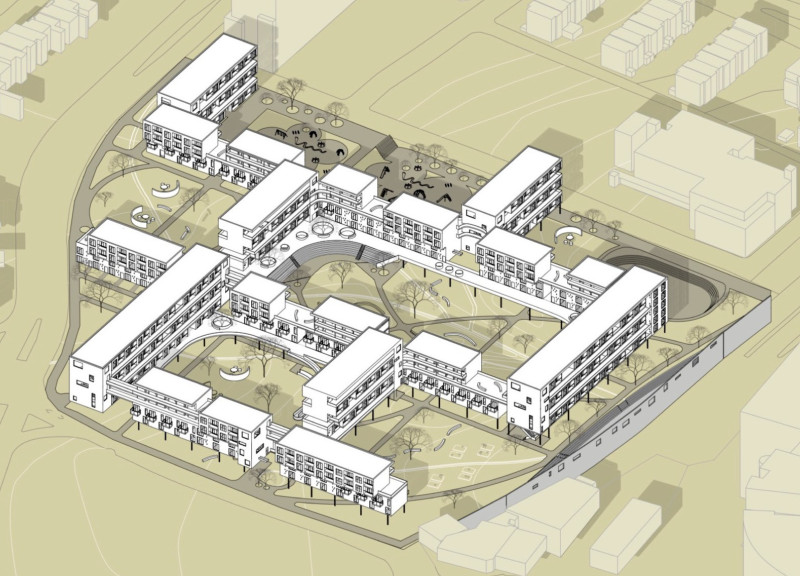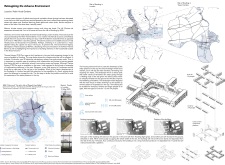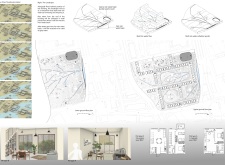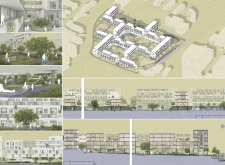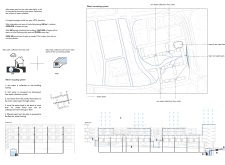5 key facts about this project
The architectural design project located at Robin Hood Gardens aims to tackle significant challenges related to climate change and urban flooding. Situated in a flood-prone area of London, the project prioritizes sustainability by offering housing solutions that connect to the natural water systems in the environment. The overall design centers on flood resilience, effective water management, and fostering a sense of community among residents.
Design Concept
The design features elevated housing units that ensure accessibility even in the event of flooding. By positioning the buildings above ground level, the plan allows for continuous movement in the area, maintaining connections to the surrounding cityscape. This approach enhances the practical use of space while highlighting the interaction between the built environment and the natural landscape.
Water Management Strategies
A core element of the design is its focus on rainwater harvesting and recycling. Rainwater is collected from the roofs and directed through channels into collection ponds. These ponds feed into a main water basin, where the rainwater is treated and reused as grey water. This thoughtful integration of sustainability practices aims to educate residents on the importance of water management in urban areas while promoting ecological balance.
Community and Landscape Integration
The landscape design incorporates natural parks and rainwater canals to assist with surface water infiltration. These features serve both practical and aesthetic purposes, improving the quality of life for residents. Green spaces and water elements create an inviting atmosphere, encouraging a connection between people and their environment.
Housing Variety
The housing scheme is designed to accommodate diverse needs by offering a range of unit sizes suitable for families and individuals. This flexibility helps cultivate a cohesive community where people from various backgrounds can live together. The layout promotes interaction among residents, supporting a vibrant social environment that enhances overall well-being.
The final design detail includes rainwater canals that run through public spaces, offering both functional water management and serene walking paths. These canals provide a place of calm for residents, reinforcing their connection to nature within the urban surroundings.


